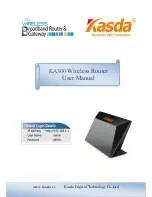
2. Click
the
Local Services
tab.
3. Double-click the service name.
Note:
Bluetooth-enabled devices from different vendors may handle security in a
slightly different manner. Please refer to the user’s guide that came with your
Bluetooth device for additional information.
Link Key
A Link Key is a unique, internally generated access code. Link Keys are generated automatically
when devices are paired or when authentication is enabled.
Link Keys are created by combining the following three items:
The Passkey
The Bluetooth Device Address
An internally generated random number
Pairing Devices
Pairing devices establishes a rather permanent relationship between two devices. It creates a
permanent security link between the two and enables easy access to all the available services
without having to enter access information every time a connection is attempted. Paired devices
share a unique Link Key that they exchange when they are establishing the connection. Moreover,
the mate of a pair will always appear in
My Bluetooth Places
even if the mate is disconnected or
is beyond connection range.
Paired devices remain paired even in the following scenario:
One of the devices is not powered up.
A service connection is interrupted or the service stopped.
One or both devices have been rebooted.
When Authentication is enable, devices are paired the very first time they attempt to connect, but
only after a successful passkey exchange.
To pair devices
before
attempting a connection:
1. In the Windows system tray, right-click the
Bluetooth Tray
icon.
Select
Setup
and then select
Security
from the submenu.
2. The
Bluetooth Security dialog box
appears, prompting BTW to
perform a device inquiry to update its list of devices in the area.
3. Once the inquiry is complete, you will see a
Found Devices
pane
in the dialog box. Click the name of the device to be paired.
4. Click
the
Execute Pairing
button.
5. The
Bluetooth Passkey Request dialog box
opens, prompting
you to enter a
Bluetooth passkey
.
6. Click
OK
.
34







































